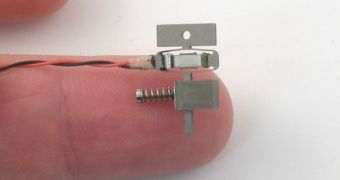Piezoelectric materials are special classes of ceramics and crystals, which have the ability to generate electrical potential when mechanical pressure is applied on them. They currently provide the basis for a large number of applications, including powering up guitar pickups, making for fuses in rocket-propelled grenades, or making up the basis for doorbells. But now, scientists at the City College of New York are working on a method of using the materials to produce electricity out of air flows.
The team basically plans to convert the kinetic energy of motion into power, especially for planes and automobiles. The investigators will present their brand-new concept between November 22-24, at the 62nd Annual Meeting of the American Physical Society's (APS) Division of Fluid Dynamics. The gathering will take place at the Minneapolis Convention Center. “These devices open the possibility to continuously scavenge otherwise wasted energy from the environment,” CCNY Professor Yiannis Andreopoulos, the leader of the research team, explains.
The new instruments, the team reports, are a half-inch by one inch in size, and they could easily be mounted on supports such as the roof or tail of a car, or the fuselage of a plane. Because they would be located directly into the path of air flows, they would vibrate accordingly, potentially producing very large amounts of energy during their life span. The current thus obtained will most likely not be enough to replace the power provided by current internal combustion engines, the experts add.
However, these amounts of electricity could be used to run secondary systems, such as batteries, or could even be used to charge GPS stations, CD players, mobile phones and other minor devices. At this point, Andreopoulos and his team are working on modeling the physical forces the new materials would be subjected to. These results would allow them to design the piezoelectric devices in a way that would ensure a maximum efficiency, while at the same reducing drag and ensuring the fuel consumption remains low.

 14 DAY TRIAL //
14 DAY TRIAL //